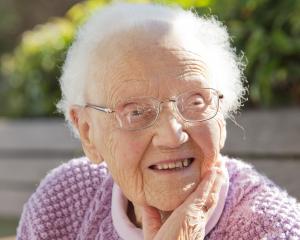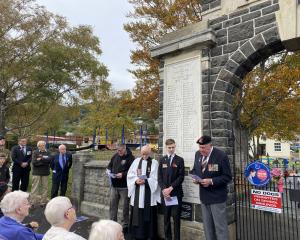Three Dunedin women say they are closer than sisters and can tell each other anything, thanks to the shared experience of serving in the Women's Auxiliary Army Corps (WAAC) during World War 2.
Sitting around a table in Mornington, they swap stories of the days when they donned the uniforms of the service formed in 1942 to relieve men for active service. By 1944, more than 3000 WAACs were serving in New Zealand.
‘‘The army made us all the same level. The friendships we made in the forces have lasted more so than any we made in civilian life,'' Gay Mullen (nee Harrison) said.
She and friends Laura Shaw (nee Dowie) and Yvonne Harbour (nee M'Kinnon) still get together regularly with surviving members of the WAACs living in Dunedin.
‘‘We're like sisters. I can say things... I wouldn't tell anybody else,'' Mrs Harbour (87) said. Remembering their days as WAACs resulted in many laughs.
All spent six weeks in training at Addington racecourse, Christchurch, at different times, before being posted - Mrs Mullen, then aged 18, to the mess and dry ration store at the army instructors' school at Trentham; Mrs Shaw, then 21, to the antiaircraft battery at Dunedin's Wharf St Camp and Mrs Harbour, then 21, to the radar division at Wharf St.
‘‘We were very naive when we first went to camp,'' Mrs Shaw (87) said. ‘‘We grew up very quickly,'' Mrs Mullen (83) said.
They arrived at training camp to find they had to fill the straw mattresses themselves and wear men's uniforms and boots, although Mrs Harbour's diminutive size meant she had to wear boys' boots.
Receiving the required immunisations was not pleasant, but it was seeing the men try to avoid the experience that amused them.
‘‘They got 24 hours excused from duty, whereas we had to go back to work,'' Mrs Mullen said. Later, they were given WAACfitted uniforms and boots.
‘‘The battledress was the most unglamorous thing you'd ever seen,'' Mrs Mullen said.
To keep warm in their bare, shared accommodations, they put newspapers between their three grey blankets.
Their work was often hard and required long hours.
Mrs Harbour remembered doing the dusk-to-dawn shift one day and seeing in her monitor an aeroplane coming straight down the coast to Dunedin. She rang the command post but noone answered.
‘‘The plane was getting close and I thought we were all going to be bombed when... someone answered [at the] last minute.
‘‘It was a blasted air force plane. We weren't told it was coming down. They were damn lucky they were not shot at.''
The hardest thing about their time in service was hearing that soldiers they knew had been killed.
"...hearing the names of those killed read out on the parade ground,'' Mrs Shaw said.
That experience meant Anzac Day was always difficult. Not only did it bring back memories of Word War 2 but also of their childhood experiences of the years following World War 1.
Mrs Shaw said Anzac Day was sacred in her parent's home. The house came to a standstill, after days of preparation, of shoes being polished, coats and pants brushed, and wreaths being made.














